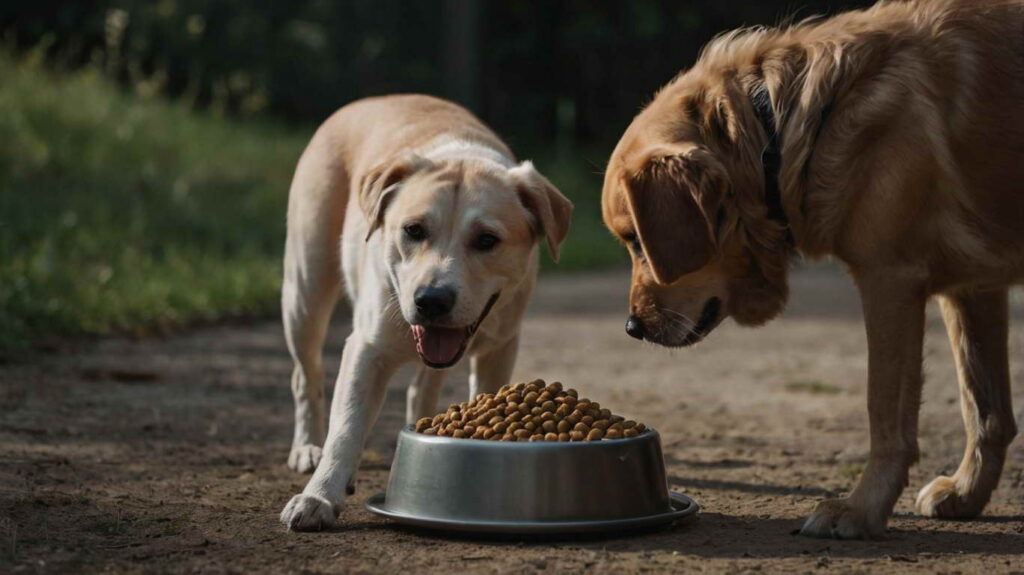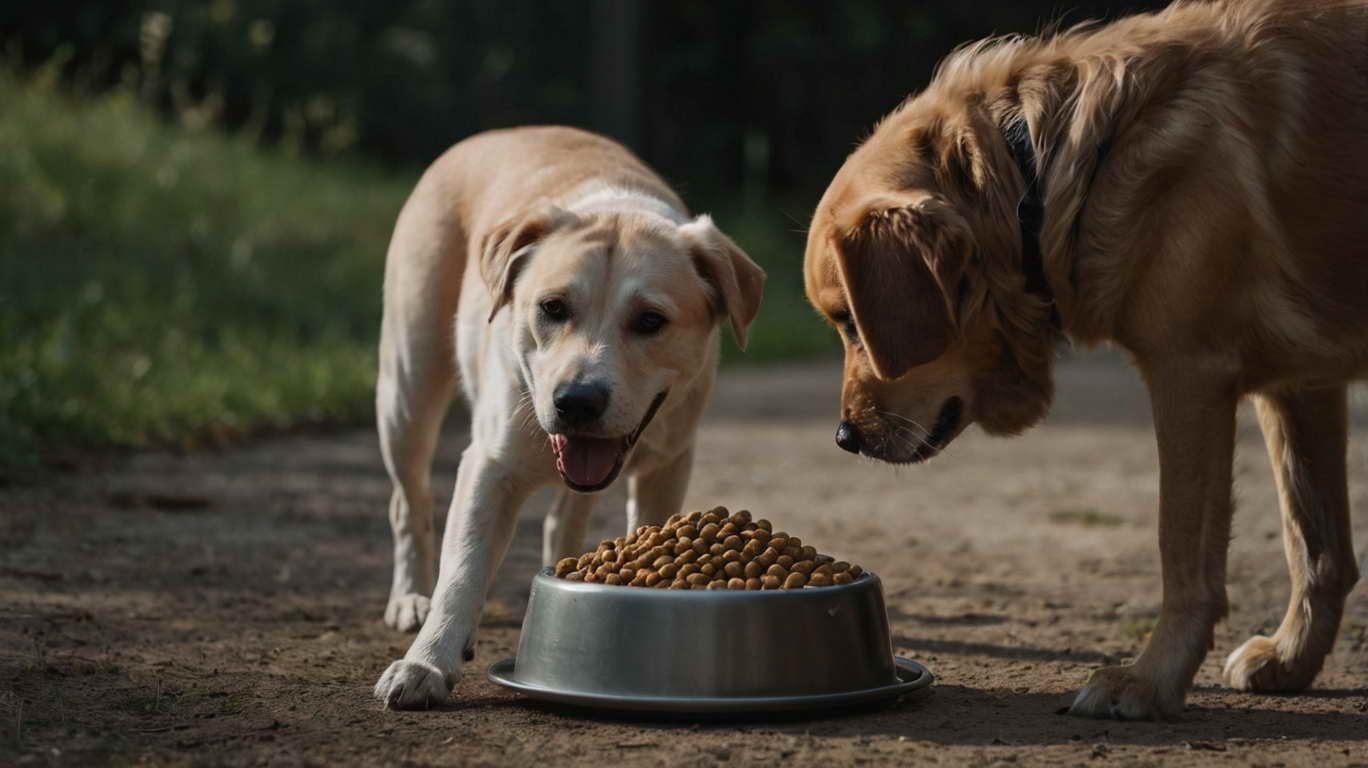
10 Proven Tricks: How To Get Your Dog To Eat Dog Food Again
Hey there, friend! I heard you’re having some trouble getting your furry companion to chow down on their regular kibble. As a professional dog trainer, I’ve seen this issue pop up more times than I can count. Don’t worry, we’ll get your pup back to their food bowl in no time. Let’s dive into why your dog might be turning their nose up at their food and what you can do about it.
Understanding the Problem
Before we jump into solutions, it’s important to understand why your dog might be refusing their food. There could be several reasons:
- Health issues: Sometimes, a loss of appetite can be a sign of underlying health problems.
- Dental problems: If your dog’s teeth or gums hurt, they might avoid eating.
- Boredom: Just like us, dogs can get tired of eating the same thing day in and day out.
- Spoiled by table scraps: If your dog’s been getting a lot of human food, they might be holding out for the good stuff.
- Changes in routine: Dogs are creatures of habit, and changes in their environment or schedule can affect their eating habits.
- Age: As dogs get older, their appetites and nutritional needs can change.
Rule Out Medical Issues
First things first, if your dog’s suddenly lost interest in their food, it’s always a good idea to check with your vet. They can rule out any health issues that might be causing the problem. Once you’ve got the all-clear from the vet, we can move on to some strategies to get your pup eating again.
Strategies to Get Your Dog Eating Again
1. Stick to a Feeding Schedule
Dogs thrive on routine. Try feeding your dog at the same times each day. Put the food down for about 15-20 minutes, then take it away if they haven’t eaten. This helps create a sense of routine and can stimulate their appetite.
2. Make Mealtime a Positive Experience
Try to create positive associations with mealtime. You could:
- Use a special feeding mat or puzzle feeder
- Give lots of praise when they approach their food bowl
- Make mealtime a fun game (more on this later)
3. Gradually Transition to New Food
If you’re switching to a new brand of dog food, do it gradually. Mix a small amount of the new food with the old, increasing the proportion of new food over a week or two. This helps prevent digestive upset and makes the transition easier for picky eaters.
4. Enhance the Flavor
Sometimes, all it takes is a little flavor boost to get your dog interested in their food again. Try:
- Adding a splash of low-sodium chicken broth
- Mixing in a spoonful of canned pumpkin (not pumpkin pie filling)
- Topping the kibble with a small amount of wet dog food
Just remember, these should be occasional tricks, not everyday additions.
5. Exercise Before Meals
A good walk or play session before mealtime can help stimulate your dog’s appetite. Plus, it’s a great way to bond with your pup!
6. Warm Up the Food
Especially for wet food or homemade meals, warming the food slightly can release more aromas and make it more appealing. Just make sure it’s not too hot!
7. Try a Different Bowl
Believe it or not, some dogs are picky about their dishes. Try a different material (like ceramic instead of metal) or a shallower bowl that doesn’t bump their tags while they eat.
8. Make Mealtime a Game
Turn mealtime into a fun activity. You could:
- Use a puzzle feeder or treat-dispensing toy
- Hide small amounts of food around the house for a “scavenger hunt”
- Practice obedience commands, using kibble as rewards
9. Limit Treats and Table Scraps
If your dog’s been getting a lot of treats or human food, they might be holding out for something better than their regular food. Cut back on the extras and save treats for training sessions.
10. Be Patient and Persistent
Remember, it might take some time for your dog to get back into the habit of eating their regular food. Stay consistent with your approach and be patient.
When All Else Fails: Homemade Dog Food
If you’ve tried everything and your dog still isn’t interested in commercial dog food, you might want to consider making your own. However, it’s crucial to ensure that homemade food meets all your dog’s nutritional needs. Always consult with your vet or a canine nutritionist before switching to a homemade diet.
Here’s a simple recipe you can try, but remember to adjust quantities based on your dog’s size and nutritional needs:
Homemade Dog Food Recipe
Ingredients:
- 1 pound lean ground turkey
- 2 cups brown rice
- 1 cup chopped carrots
- 1 cup chopped green beans
- 1 tablespoon olive oil
- 1/4 cup chopped parsley
- 1 multivitamin supplement (as recommended by your vet)
Instructions:
- Cook the brown rice according to package instructions.
- While the rice is cooking, heat the olive oil in a large skillet over medium heat.
- Add the ground turkey and cook until browned, breaking it up as it cooks.
- Add the chopped carrots and green beans to the skillet. Cook for another 5-7 minutes until the vegetables are tender.
- Mix in the cooked rice and chopped parsley.
- Allow the mixture to cool before serving.
- Add the multivitamin supplement as directed by your vet.
This recipe provides a balance of protein, carbohydrates, and vegetables. However, it’s essential to rotate ingredients and ensure your dog is getting all necessary nutrients over time.
The Raw Food Option
When discussing how to get your dog to eat dog food again, we can’t ignore the growing trend of raw food diets. Some dog owners swear by feeding their pets raw meat, believing it more closely mimics what dogs would eat in the wild. The idea is that raw meat, bones, and organs provide a more natural and nutritionally complete diet. Proponents claim benefits like improved dental health, shinier coats, and increased energy levels.
However, it’s crucial to note that raw diets come with risks, including potential bacterial contamination and nutritional imbalances if not properly prepared. If you’re considering switching to a raw diet to entice your picky eater, it’s essential to consult with your veterinarian first. They can guide you on whether a raw diet is appropriate for your dog and how to safely transition if it is. Remember, whether you’re feeding kibble, homemade food, or raw meat, the goal is to provide a balanced, safe diet that your dog enjoys and thrives on.
The Importance of Consistency
Whatever method you choose to get your dog eating again, consistency is key. Dogs are creatures of habit, and they do best with a regular routine. Once you find something that works, stick with it!
When to Seek Professional Help
If you’ve tried these strategies and your dog still isn’t eating, it might be time to consult a professional. A veterinary behaviorist or a certified dog trainer with experience in feeding issues can provide personalized advice and strategies.
Prevention is Better Than Cure
Once you’ve got your dog eating regularly again, here are some tips to prevent future issues:
- Maintain a consistent feeding schedule
- Avoid frequently changing dog food brands
- Limit treats and human food
- Ensure your dog gets regular exercise
- Keep up with regular vet check-ups
Final Thoughts
Remember, every dog is unique, and what works for one might not work for another. It might take some trial and error to find the right solution for your furry friend. The key is to be patient, persistent, and observant.
Watching your dog refuse to eat can be stressful, but try not to let your anxiety show. Dogs are incredibly perceptive and can pick up on our emotions. Stay calm and positive, and your dog is more likely to respond well.
Lastly, don’t forget that this is just a phase. With patience and the right approach, your dog will be back to enjoying their meals in no time. And hey, if you need any more advice or just want to chat about your progress, you know where to find me. Good luck, and give that pup a scratch behind the ears from me!

Leave a Reply